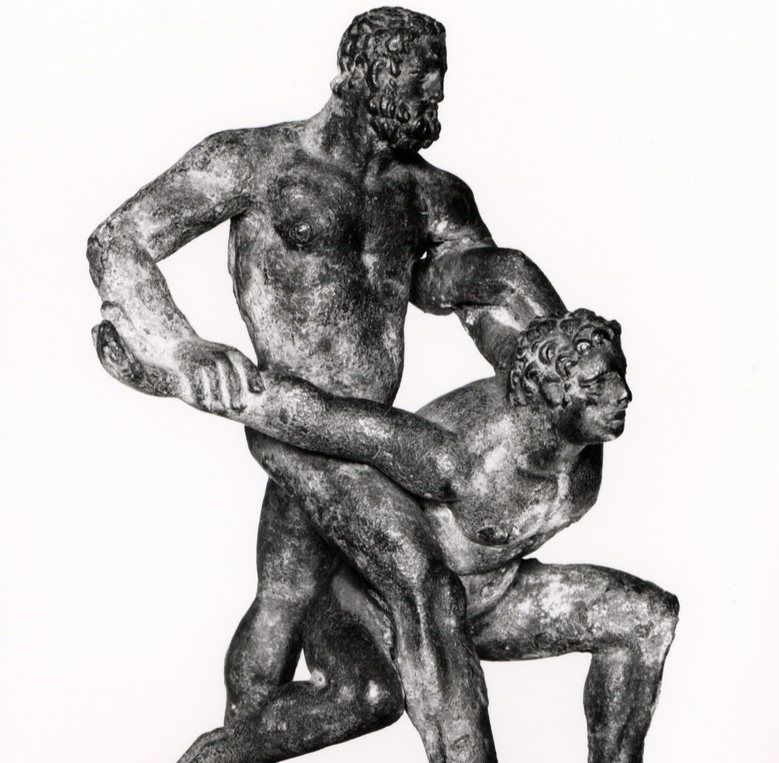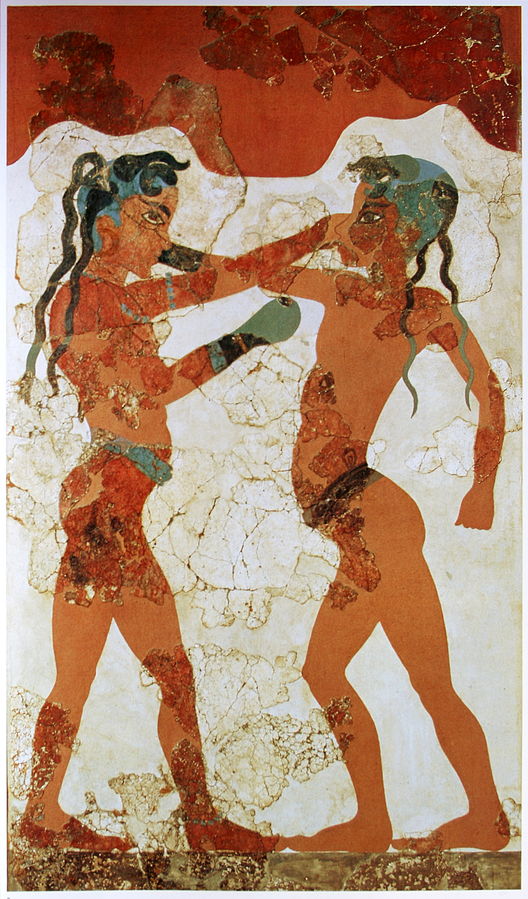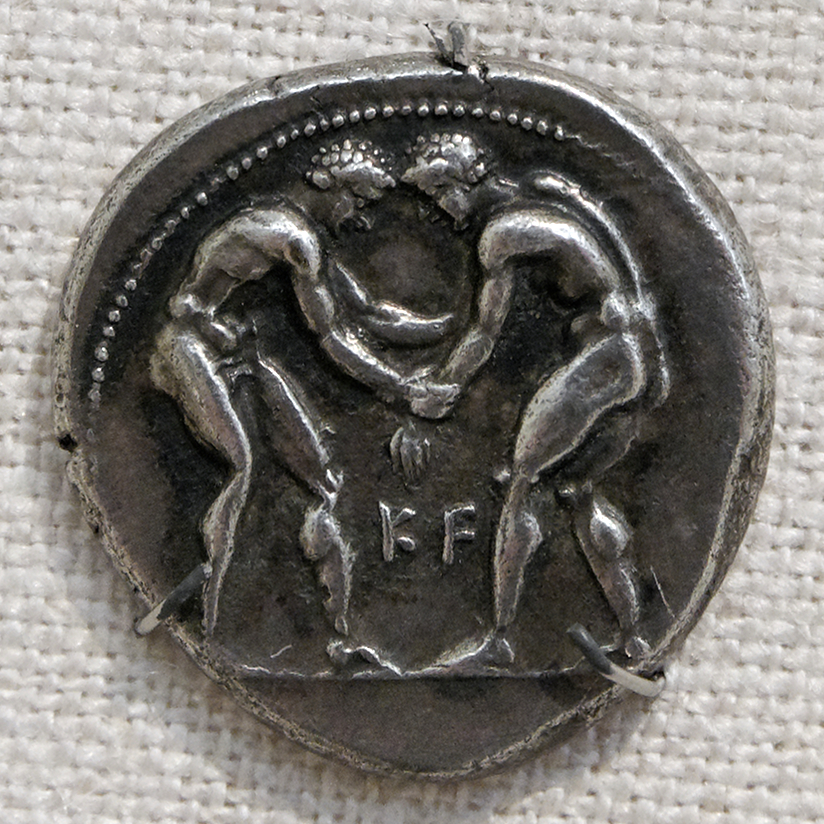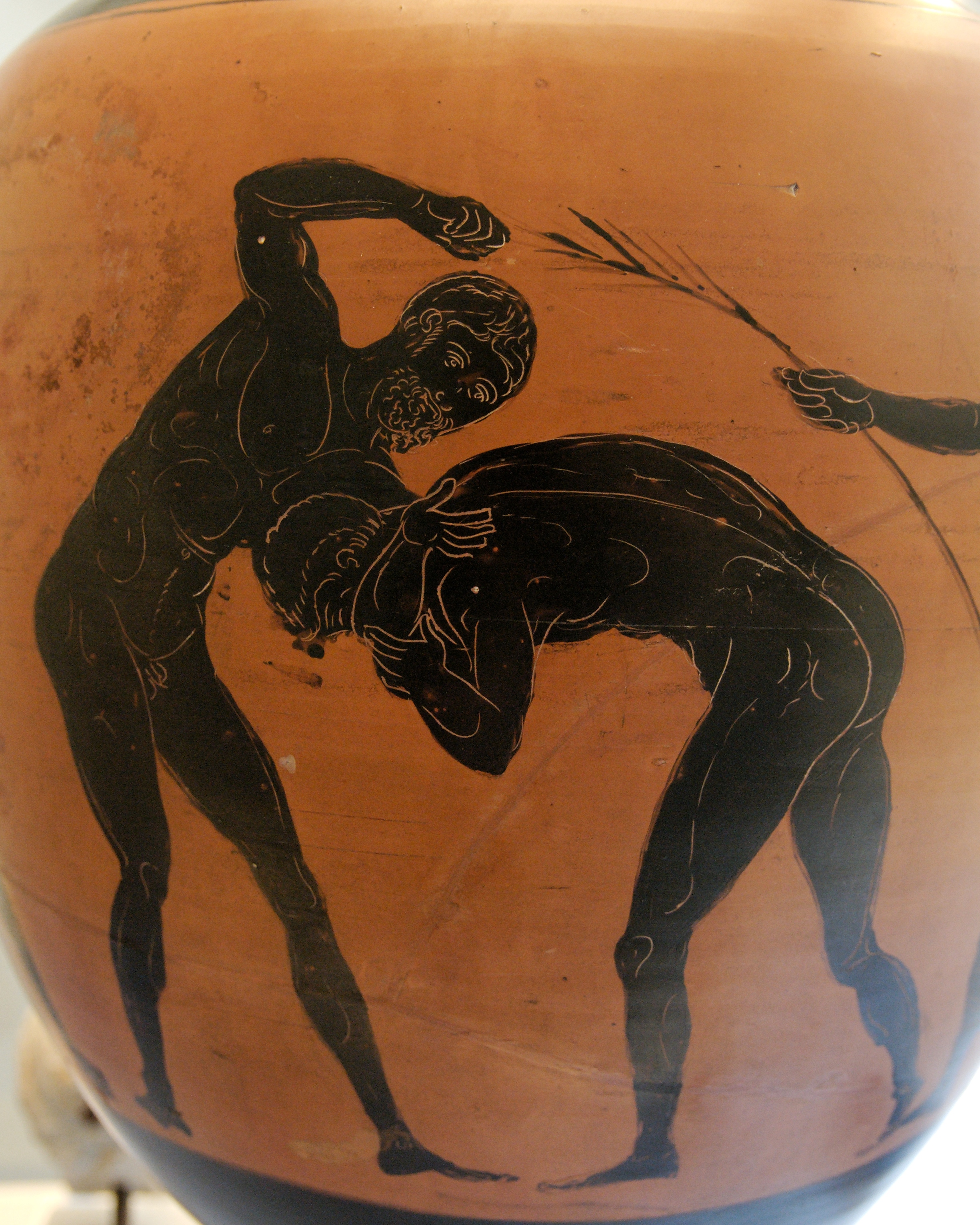|
When you ask somebody what are European martial arts, most common answer will be box and Greco-Roman wrestling. Yes, that’s true, but those are relative new sports. We must travel much more deeper in our history. Our first stop will be Ancient Greek. Boxing is oldest martial art. Pygmachia is oldest form of boxing in Europa. It dates back to at least the 17th century BCE (Homer’s Iliad), and was practiced in a variety of social contexts in different Greek city-states. Still, it is clear that gloved boxing bouts were a significant part of ancient Greek athletic culture throughout the early classical period. The scholar and historian Philostratus maintained that boxing was originally developed in Sparta. The early Spartans believed helmets were unnecessary and boxing prepared them for the inevitable blows to the head they would receive in battle. However, Spartans never participated in the competitive aspect of boxing, believing the means of defeat to be dishonorable. There is archeological and artistic evidence of ancient Greek boxing in Αncient Greek as early as the Minoan and Mycenaean periods. There are numerous legends about the origins of boxing in Greece. One legend holds that the heroic ruler Theseus invented a form of boxing in which two men sat face to face and beat each other with their fists until one of them was killed. In time, the boxers began to fight while standing and wearing gloves (with spikes) and wrappings on their arms below the elbows, but otherwise they fought naked. There was no protection for the face or head. According to the Iliad, Mycenaean warriors included boxing among their competitions honoring the fallen, though it is possible that the Homeric epics reflect later Greek culture. Boxing was among the contests held in memorial of Achilles slain friend Patroclus, toward the end of the Trojan war. It was in commemoration of Patroclus that the Greeks later introduced boxing to the Olympic Games in BCE 688. Participants trained on punching bags (called a korykos). Fighters wore leather straps (called himantes) over their hands (leaving the fingers free), wrists, and sometimes breast, to protect themselves from injury. Minoan youths boxing (BCE 1500), Knossos fresco. Earliest evidence for use of gloves Greek wrestling , also known as Ancient Greek wrestling or Palé, was the most popular organized martial art in Ancient Greek. A point was scored when one player touched the ground with his back, hip or shoulder, or conceding defeat due to a submission-hold or was forced out of the wrestling-area. Three points had to be scored to win the match. One particularly important position in this form of wrestling was one where one of the contestants was lying on his belly with the other on his back trying to strangle him. The athlete on the bottom would try to grasp an arm of the one on top and turn him over onto his back while the athlete on top would try to complete the choke without being rolled. Wrestling was the first competition to be added to the Olympic Games that was not a footrace. It was added in 708 B.C.. The competitions were held in elimination-tournament style until one wrestler was crowned the victor. The wrestling area was one square plethron or stremma. This event was also part of the pentathlon. Wrestling was regarded as the best expression of strength out of all of the competitions and was represented in Greek mythology by Heracles. Also it was first martial art with strict rules. Here are the rules: No intentional hitting or kicking is permitted. No gouging the eyes or biting is permitted, since even the Pankration does not allow these. It is at the discretion of the referee whether or not twisting the fingers with the intention of forcing the opponent to concede defeat is permitted. Grasping the genitals is prohibited. All other holds intended to persuade the opponent to concede defeat through pain or fear are permitted and are an integral part of the contest. Infractions shall be punished by immediate whipping by the referee until the undesirable behaviour is stopped. Three points must be scored to win the match. A point can be scored in any of three ways: 1. the opponent’s back touching the ground at any time, 2. by the opponent tapping or in some other way making clear that s/he concedes defeat through pain or fear, 3. by the opponent making contact with ground outside the allocated wrestling-match ground with any part or her/his body, or by being lifted and carried out. After scoring a point, the opponent must be given time to rise on her/his feet and a few moments more before the wrestling may continue. The match is both started and ended at the signal of the referee. The referee can at any time stop the match if s/he believes a point has been scored but the contestants have continued to wrestle unaware of the point having been scored. The referee or other officials in charge of the contest, if other officials are presiding, shall resolve any dispute the contestants have over scoring, and their decision shall be final. The wrestling-ground shall be a large square, 28.5 by 28.5 metres, or any other size determined by the holders of the games, and it shall be all of sand or earth. The contestants shall begin the match at the center of the wrestling-ground outside of each other’s touching-range, the precise distance being at the discretion of the referee. All other more specific details are at the discretion of the officials presiding over the games. Wrestlers on a silver tetradrachm of Aspendos, Pamphilia (400–374 BC) Third martial art from Antient Greek was Pankration. Pankration was a sporting event introduced into the Greek Olympic Games in 648 BC and was an empty-hand submission sport with scarcely any rules. The athletes used techniques from boxing and wrestling but also other types, such as kicking and holds, locks and chokes on the ground. The only things not acceptable were biting and gouging out the opponent's eyes. The term comes from the Greek paŋkrátion, literally meaning "all of might". Pankration was more than just an event in the athletic competitions of the ancient Greek world; it was also part of the arsenal of Greek soldiers – including the famous Spartan hoplites and Alexander the Great's Macedonian phalanx. It is said that the Spartans at their immortal stand at Thermopylae fought with their bare hands and teeth once their swords and spears broke. Polyaemus describes King Philip, the father of Alexander the Great, practicing with another pankratiast while his soldiers watched. By the Imperial Period, the Romans had adopted the Greek combat sport into their Games. In 393 A.D., the pankration, along with gladiatorial combat and all pagan festivals, was abolished by edict of the Christian Byzantine Emperor Theodosius I. Pankration itself was an event in the Olympic Games for some 1,000 years. It is a matter of controversy whether and to what extent pankration persisted in Greek and the broader Byzantine society after the ancient Games were discontinued. In Pankration we can see clear use of techniques, guards and st ands. When the pankratiasts fought standing, the combat was called Anō Pankration, "upper Pankration"); and when they took the fight to the ground, that stage of pankration competition was called katō pankration "lower pankration". Fighting stance for the pankratiast was that he faces his opponent with a nearly frontal stance - only slightly turned sideways. This is an intermediate directional positioning, between the wrestler's more frontal positioning and the boxer's more sideways stance and is consistent with the need to preserve both the option of using striking and protecting the center line of the body and the option of applying grappling techniques.We can see use of wide range of techniques. Striking techniques: punch and other hand strikes, strikes with the legs, straight kick to the stomach. Locking techniques: arm locks, single shoulder lock (overextension), single arm bar (elbow lock), arm bar – shoulder lock combination. Choking techniques: tracheal grip choke, tracheal dig using the thumb, choke from behind with the forearm. Throws and takedowns: heave from a reverse waist lock, heave from a waist lock following a sprawl, heave from a waist lock from behind. Strategy and tactics: remaining standing versus going to the ground, offensive versus reactive fighting, identifying and exploiting the weak side of the opponent. Two athletes competing in the pankration. Panathenaic amphora, made in Athens in 332–331 BC, during the archonship of Niketes. From Capua
2 Comments
|
MarkoUndermaster of historical fencing ArchivesCategories
All
|




 RSS Feed
RSS Feed
